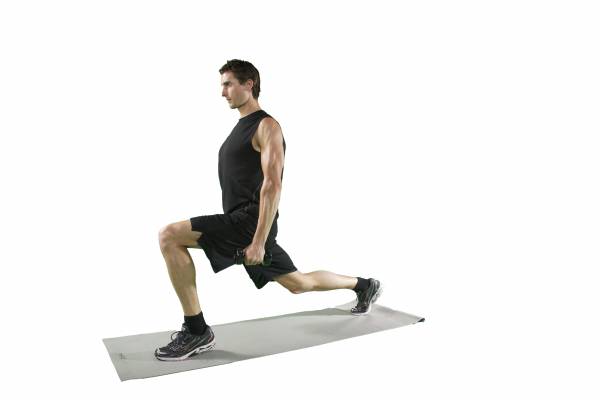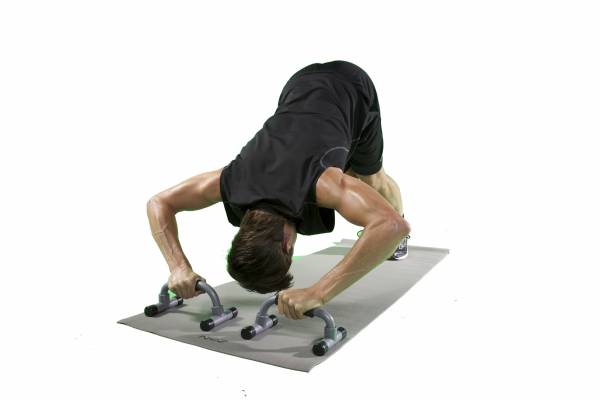A few decades ago endurance athletes where encouraged to avoid “gym training” for fear that they would develop heavy, bulky muscles. The reasoning was: extra mass without function will inhibit endurance performance.
A few decades ago endurance athletes where encouraged to avoid “gym training” for fear that they would develop heavy, bulky muscles. The reasoning was: extra mass without function will inhibit endurance performance.
This makes sense. However, the reason “gym training” was adamantly shunned by the endurance culture was primarily due to it being lumped together with the bodybuilding culture. Of course, the main reason bodybuilders lift weights is to build bulk. They also weight train for symmetry and definition, but the vast majority of their time spent training it to get bigger.
In the early eighties some endurance athletes began supplementing their regular endurance training with weight training in hopes of improved endurance. The results where mixed. While the athletes generally gained some strength, they also gained weight. Therefore their strength-to-weight-ratio showed only very modest improvements, and not enough to justify the energy expenditure in performing the extra workout. In other cases, strength-to weight-ratio dropped. Why? The problem was that these endurance athletes were doing body-building-style workouts, designed to grow muscle size with little or no improvement in functional strength. Of course this resulted in a reduction in the endurance athletes most valued attribute: strength-to-weight ratio.
When it was realized that various training principals and techniques could be reworked to make bulk-less strength gains, gym workouts for endurance athletes were revisited.
While some endurance athletes were embracing gym workouts, there were still those who abstained. It was clear that a finely tailored weight training program could be implemented to build strength without an increase in size or weight, but why would an endurance athlete need strength? And would a few gym workouts to achieve it be worth the extra energy expenditure? Would the “return” on investment be justifiable?
Clearly marathon running is an endurance event, not a strength sport. At least this is what traditional wisdom states. But is it correct? For a marathoner, what advantage is it to be able to lift more weight? As it turns out, it can actually be a significant benefit.
If, for example, two runners are completely equal in every respect except for muscular strength, the stronger will be faster over any distance. The lower percentage of maximum strength needed for each stride will translate into improved efficacy and therefore greater endurance. If for example one runner can squat 10% more weight than another, his muscles will not have to work as hard to move the body forward, which can translate to significant endurance gains. When muscles don’t need to work as hard, they also don’t require as much oxygen or circulating blood and therefore will not put as much demand on the heart, which in turn will lower that rate at which it beats. A significant improvement in endurance will be the result. Greater strength does equal greater endurance. In order to build what is now commonly referred to as functional strength, properly structured gym workouts have been embraced by most all high-level endurance athletes.

While the focus for runners and cyclists will expectedly be the legs, gains in upper-body strength can translate to a significant performance advantage by improving muscle efficacy.
Since the arms are used and upper body engaged, improving the efficacy by which they function will help. Each time muscles contract, oxygen and nutrients in the blood is needed. As with the legs, the arms will draw upon the heart to deliver oxygen, nutrition and remove waste products (lactate) so that they can continue moving fluently with ease. With this being the case, it makes sense to increase the strength of the upper body as well so that it doesn’t become too much of an oxygen draw on the system as a whole and increase heart rate.
Nutrition is a vital part of physical training. Of course the things you eat are the building blocks used to reconstruct muscle tissue the training has broken down. Make sure to consume a nutrient-packed smoothie after each workout. Quick and efficient recovery from each workout is key. The faster you can recover, the sooner you can train again. This is what leads to true gains and will improve your performance more so than any other single principal. That’s why I created the Vega Complete Whole Food Health Optimizer formula. I have a serving after each workout to reduce inflammation and start the regeneration process.
The following program is the one of my routines I perform before I begin a more specific phase, one that converts strength into power. For this one, I perform it three times per week. It is extremely effective, but keep in mind that it was designed for someone who has been weight training constantly for at least a year. Tendons, ligaments and connective tissue need to adapt to a more advanced training program such as this, so not to cause injury. If you are new to weight training, I suggest a more basic program to begin with that will gently allow for your body to adapt. Then you can give this one a try. For basic programs to get you started, you may visit: www.zonfitness.com
This workout is for functional strength gain. It will keep you lean and will improve strength-to-weight-ratio and therefore efficacy, endurance and ultimately running performance as a whole. The “high-return” exercise philosophy is taken from my book Thrive Fitness: Mental and Physical Strength for Life. I have applied this concept to a new program I developed in partnership with ZoN Fitness. It’s called the ZoN Thrive Fitness program. You may download the complete video series and the Mental and Physical Benefits of Exercise e-book that I wrote, as well as 20 plant-based recipes for boosting health and performance for FREE at: www.zonfitness.com
For high-performance plant-based recipes to boost your athletic performance, you may visit: www.vegasport.com
Lower Body
- Lunges: 3 sets of 15 reps
A good all round exercise that helps develop the stabilizer muscles. Particularly important if you periodically run on uneven ground. Also serves as a good warm-up.

- Ball Squat: 3 sets of 12 reps
This is an ideal exercise to quickly increase over-all leg strength while also building stabilizer muscles along with shoulders.
- Strength Ball Lifts on Balance Ball: 4 sets of 15 reps
Builds lower back strength; helps prevent back injury. Boosts core strength and efficacy.
- Double Crunch with Strength Ball: 3 sets of 15 reps
Strengthens core, and in doing so helps improve posture, form and breathing.
Upper Body
- 3 sets of 15 reps on each exercise
Reduces oxygen usage of the upper body while running, thereby lowering heart rate and improving endurance. Also helps to maintain proper, efficient form, even once fatigue had set in.

- Alternating Hand Ball Push-Up
- Bent Over Lat Rows
- Shoulder Press with Push-Up Stands
- Upright Rows
Workout specifics: Perform lower body exercises two times per week, immediately following your hard runs. The upper body portion can be preformed two to three times per week, on alternate days. Rest 90 seconds in between lower body exercises and 60 second in between upper body ones. You may choose to do abdominal exercise in between upper body sets.






